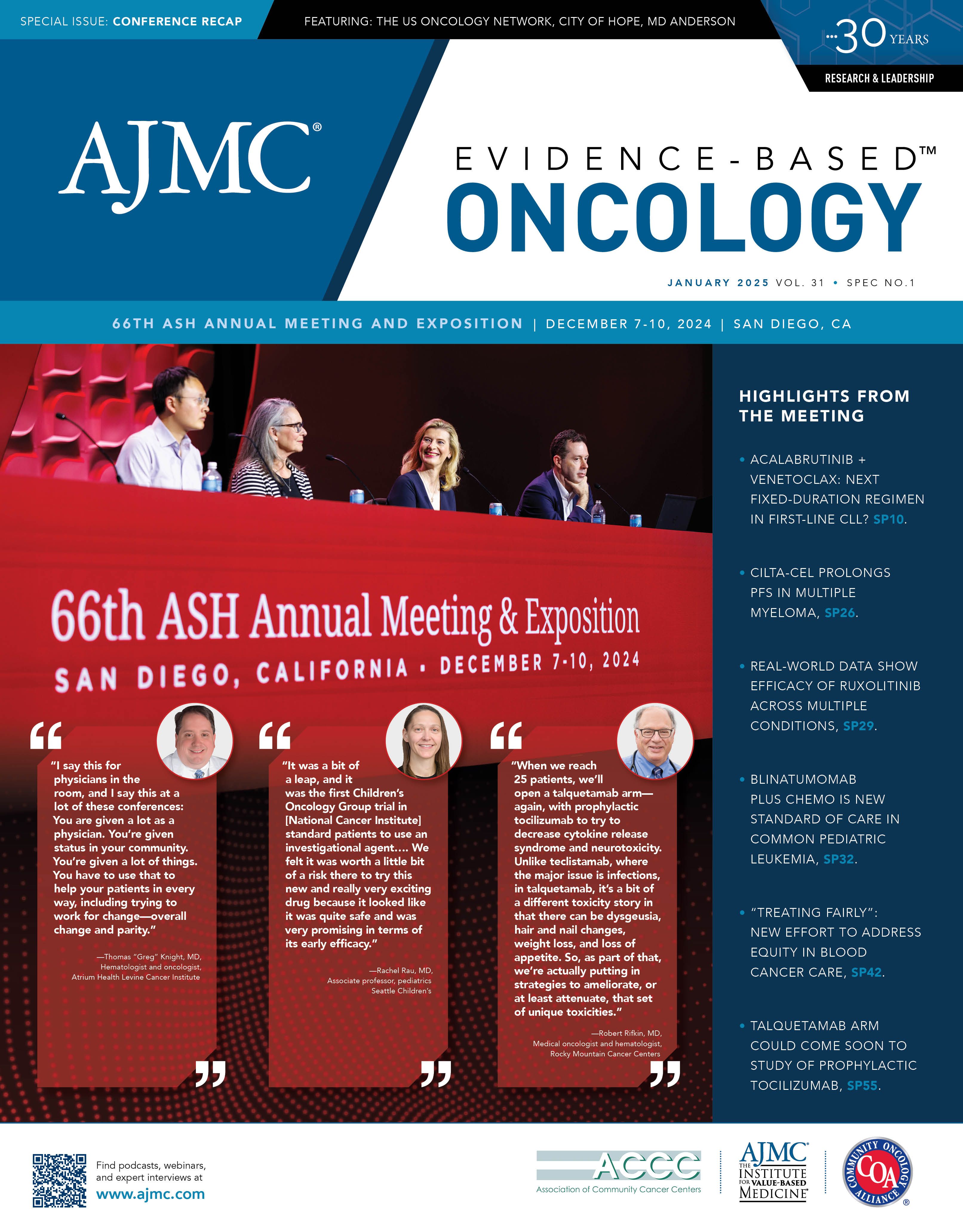- Center on Health Equity & Access
- Clinical
- Health Care Cost
- Health Care Delivery
- Insurance
- Policy
- Technology
- Value-Based Care
Unmet Needs in Hemophilia: Prophylaxis, Bleeding, Quality of Life
A pair of studies presented at the 2024 American Society of Hematology (ASH) Annual Meeting & Exposition highlight continuing gaps in hemophilia care despite the availability of prophylactic therapies.
There is a persistent unmet need for more effective therapies for hemophilia.
Image Credit: Mayava - stock.adobe.com

A pair of studies presented at the 2024 American Society of Hematology (ASH) Annual Meeting & Exposition highlight the continuing gaps in hemophilia care, even with the availability of prophylactic therapies.1,2 There is a persistent unmet need for more effective therapies for hemophilia. Despite advancements in treatment, more than one-third of patients still experience bleeding episodes, and joint damage remains a significant issue.
The ability to manage hemophilia A (HA) through factor VIII (FVIII) replacement therapies and non-factor therapies (NFT) has sustained the progress of this treatment approach, but bleeding episodes continue to affect the physical health and quality of life (QoL) of patients.1 One of the studies sought to evaluate the unmet needs of individuals with moderate to severe HA who are on prophylactic treatment, shedding light on patient- and physician-reported outcomes.
The research utilized data from the Adelphi Hemophilia Disease Specific Programme, a real-world cross-sectional survey conducted in the US between July 2023 and March 2024. The study analyzed responses from 47 hemophilia-treating physicians regarding 244 patients and incorporated voluntary patient-reported outcomes to capture the broader impact of the disease.
Patients included in the analysis had no inhibitors, known baseline FVIII activity levels, and were receiving prophylactic treatment with standard half-life (SHL), extended half-life (EHL) therapies, or emicizumab (NFT). Data on annual bleeding rate (ABR), joint health, therapy utilization, and employment status were descriptively analyzed.
Demographics and FVIII Activity Levels
The patient cohort had a mean age of 27.4 years, with 81.6% aged 18 years or older. At the time of the survey, 92 patients had FVIII activity levels of 2.0–5.0%, 90 had levels of 1.0–2.0%, and 62 had levels below 1.0%.
Treatment Outcomes
Among the patients, 113 received SHL therapy, 40 received EHL therapy, and 67 were treated with NFT. ABR data were available for patients treated for over a year:
- Overall ABR: 0.80 (95% CI, 0.57-1.03).
- SHL therapy: 0.77 (95% CI, 0.45-1.15).
- EHL therapy: 1.09 (95% CI, 0.46-1.74).
- NFT: 0.52 (95% CI, 0.22-0.78).
Despite prophylactic treatment, 39 patients (16%) experienced 1 or more bleeds in the previous year, with rates varying by treatment group: SHL (41.0%), EHL (52.2%), and NFT (37.9%).
Joint Health and Therapy Utilization
Joint problems were reported in 25% of patients within the last year. Among these, 44.3% used therapies such as physical therapy (26.2%), yoga or Pilates (13.9%), or massage (9.4%) to manage symptoms. Furthermore, 23% required aids like braces or crutches due to joint damage.
Impact on Daily Life, Employment, Psychological Burden
The study highlighted significant challenges related to quality of life for patients with hemophilia A. Among those unable to work full-time, a substantial 28.1% attributed their inability to the condition. Additionally, a striking 84.0% of patients reported avoiding physical activities, with 12.0% doing so frequently. Furthermore, 73.7% expressed difficulty in participating in sports and hobbies, underscoring the impact of HA on their daily lives and recreational pursuits.
A considerable 55% of individuals with the condition reported experiencing nervousness or anxiety. Furthermore, 80% expressed concerns about breakthrough bleeds, indicating a persistent worry about their health and well-being. Additionally, 40% of patients shared feelings of fear or worry associated with their condition, emphasizing the psychological challenges faced by those living with hemophilia A.
The Spectrum of Unmet Needs in Hemophilia
Complementing these findings, the second study evaluated unmet needs among patients with HA and hemophilia B (HB) through real-world data collected from physicians and patients across 8 countries, including the US, UK, and Japan.2
The study found that the majority of patients were treated prophylactically, with SHL factor therapy being the most common for HA and EHL therapy predominating in HB. Despite these therapies, many patients experienced breakthrough bleeding and moderate to severe joint problems. Physicians reported that 25% of patients had joint issues at the initiation of prophylaxis, with 15% continuing to experience these issues after more than a year of treatment. Alarmingly, 32% of adults and 30% of adolescents reported moderate to severe joint pain during consultations in the preceding week.
Patients and physicians both highlighted the emotional toll of hemophilia, with 86% of patients expressing frequent worry about breakthrough bleeds and reporting associated anxiety, lack of energy, and fear. Physical activity avoidance was common, with 43% avoiding it often and 48% sometimes, particularly in countries like France, China, and Germany. In addition to stopping or reducing bleeds, improving QoL emerged as the most prioritized goal for patients, followed by joint protection and increased physical activity.
Patients with hemophilia across the spectrum still face regular challenges like frequent bleeding episodes, joint damage, and chronic pain, which negatively impact their quality of life. These findings show a continued unmet need for more effective therapies that not only focus on preventing bleeding but also improve joint health and address the psychological aspects of living with the disease. The authors emphasized that it is essential for stakeholders to prioritize innovative therapeutic strategies and holistic care models to enhance the overall well-being of individuals with hemophilia.
References
1. Malec L, Matino D, Wynne-Cattanach K, et al. Unmet Needs, Factor Consumption, and Healthcare Resource Use Among People with Hemophilia a: Real-World Analysis of the Adelphi Hemophilia Disease Specific Programme. Blood. 2024;144(Supplement 1):3973.
2. Malec L, Salehi H, Ball N, Lai S, Afonso M. Unmet Needs in People with Hemophilia Receiving Prophylaxis Treatment: A Real-World Survey. Blood. 2024;144(Supplement 1):2314.

